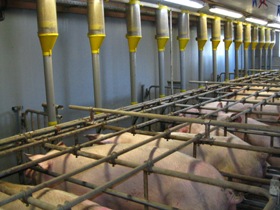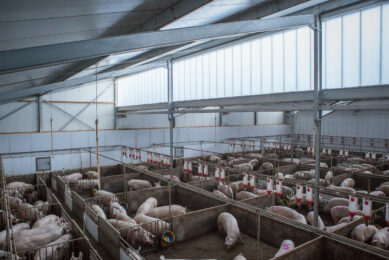Draft code NZ suggests limited use of sow stalls

The New Zealand National Animal Welfare Advisory Committee (NAWAC) has released a draft code for its reviewed Animal Welfare (Pigs) Code of Welfare 2005.
The review was programmed so issues surrounding the use of confinement systems (such as farrowing crates and dry sow stalls) in pig production could be re-examined.
While the draft code does not immediately ban the use of crates and stalls, it does propose new limits for the amount of time they can be used post mating/farrowing and proposes to prohibit the use of sow stalls for all use after a date to be determined after the consultation process.
Draft code suggestions
Accordingly, the draft code contains standards that:
• limit the use of farrowing crates to four weeks post-farrowing from the date the code is issued
• limit the use of dry sow stalls to four weeks post-mating after 31 December 2012
• prohibit the use of dry sow stalls at a date to be determined following the consultation process.
Challenge
NAWAC chairman Dr John Hellstrom said that the challenge in modern day pig production lies in finding viable alternative management systems for industry that improves animal welfare overall.
“Pigs in production systems are quick to establish dominance, which is maintained through aggression to win things like food, water and space. There can be severe injuries from fighting and you also end up with subordinate pigs lower down the social order may suffer from lack of access to food and water. The level of aggression in sows can be particularly severe in early pregnancy.”
“The challenge is to manage pig aggression while giving them the opportunity to display more positive behaviour – being social, living in groups, and rooting and chewing for example.”
Phasing out
As such, the review has re-affirmed NAWAC’s belief that the use of dry sow stalls and farrowing crates should be eventually phased out, but only when other viable options are possible said Hellstrom.
“Alternatives to current confinement systems must improve overall animal welfare. In the case of farrowing crates, no alternative that still provides protection for the piglets while allowing the sow more freedom to move around has yet been found anywhere in the world.”
“In the case of dry sow stalls, the situation is less clear-cut. There is no strong scientific evidence for a preference to any other commercial production system, nor is there strong evidence for sow stalls to be preferred over others on welfare grounds. Because of this, NAWAC has taken consideration of societal expectations and analysis of economic impacts in proposing a future ban.”
Consultation
The code review has taken place in consultation with the pork industry, representatives of farmers, veterinarians and animal welfare organisations. A draft economic analysis conducted by the Ministry of Agriculture & Forestry (MAF) incorporating some information provided by the pork industry, identifies that the industry should be able to phase out dry sow stalls as early as 2017 without causing significant harm to pork producers.
“The code is a draft and there haven’t been any final decisions made. We want to know whether the minimum standards and recommendations have gone too far or not far enough and welcome comments on the content of the code and proposed timing of changes,” said Hellstrom.
The draft code is available here; and the closing date for submissions is 16 April 2010.
Related website:
• Ministry of Agriculture and Forestry
• National Animal Welfare Advisory Committee











